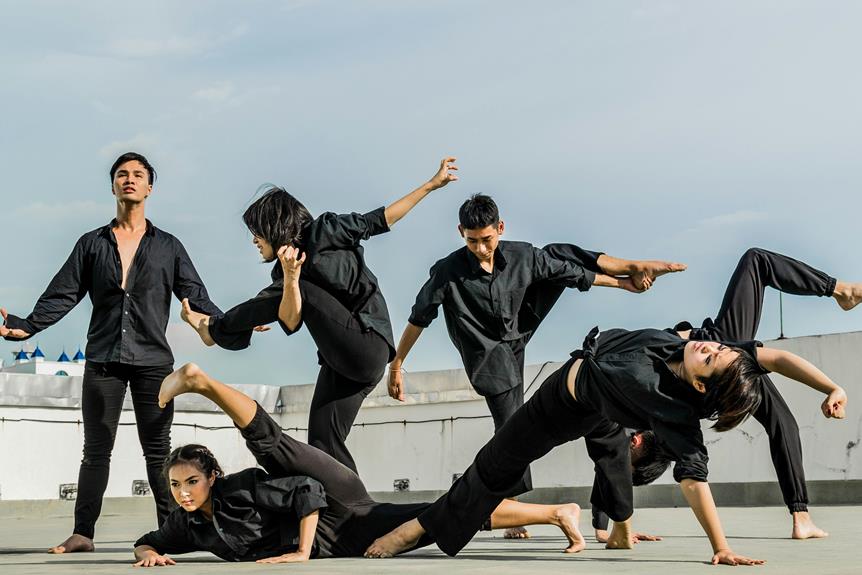
When you step onto your yoga mat, you might not realize the transformative effects awaiting you. The gentle flow of movements and holds may seem simple, but the intricate blend of stretching and strengthening poses works wonders on your body. As you move through the various asanas, your muscles are challenged in unique ways, leading to increased flexibility and strength. But how exactly does this ancient practice achieve such remarkable results? Let's explore the fascinating mechanics behind yoga's ability to enhance both your flexibility and strength.
Benefits of Yoga for Flexibility
Yoga enhances flexibility through a combination of stretching and strengthening exercises. By engaging in yoga regularly, you can gradually increase your range of motion and improve your overall flexibility. The various poses and movements in yoga target different muscle groups, helping to release tension and increase elasticity in your body.
One of the key benefits of yoga for flexibility is the focus on proper alignment and posture. As you flow through different poses, you learn to lengthen and stretch your muscles in a safe and controlled manner. This not only helps to prevent injuries but also allows you to deepen your stretches over time.
Additionally, the breathing techniques practiced in yoga can aid in improving flexibility. By focusing on your breath and syncing it with your movements, you can relax your muscles and go deeper into stretches. This mindful approach to stretching can lead to increased flexibility and a greater sense of ease in your body.
Yoga Poses for Increased Strength
To further enhance your physical prowess and overall fitness, incorporating specific yoga poses can significantly contribute to increasing your strength and muscle endurance. Poses like Plank, Chaturanga, and Warrior poses engage multiple muscle groups simultaneously, building strength in your arms, core, and legs. The Plank pose, for instance, strengthens your core, arms, and shoulders, while Chaturanga challenges your arm and shoulder muscles. Warrior poses, such as Warrior I and Warrior II, help build lower body strength and stability.
Additionally, poses like Boat pose and Dolphin plank target your core muscles, enhancing overall strength and stability. Incorporating these poses into your yoga routine can help you develop functional strength that translates into daily activities and other physical pursuits. Remember to focus on proper alignment and engage your muscles mindfully during each pose to maximize the strength-building benefits. By consistently practicing these yoga poses, you'll notice improvements in your strength, muscle endurance, and overall physical performance.
Techniques to Enhance Flexibility
Enhancing flexibility is crucial for improving your range of motion and preventing injuries during physical activities. To enhance your flexibility through yoga, focus on incorporating dynamic stretches into your routine. Dynamic stretches involve continuous movement through a full range of motion and can help improve flexibility in a more functional way compared to static stretching. Additionally, practicing yoga poses that target specific muscle groups can also help increase flexibility. Poses like Downward-Facing Dog, Forward Fold, and Pigeon Pose are excellent for stretching the hamstrings, hips, and lower back.
Another technique to enhance flexibility is to gradually increase the intensity and duration of your stretches. By holding stretches for longer periods and gradually pushing your limits, you can encourage your muscles to adapt and become more flexible over time. Remember to breathe deeply and relax into each stretch to prevent straining your muscles. Consistency is key when it comes to improving flexibility, so make sure to incorporate these techniques into your yoga practice regularly.
Building Core Strength Through Yoga
Strengthen your core muscles effectively with targeted yoga poses that engage and tone your abdominal and back muscles. By incorporating specific asanas into your yoga practice, you can develop a stronger and more stable core. Poses like Plank, Boat Pose, and Side Plank are particularly beneficial for engaging the core muscles.
Plank pose, for example, requires you to maintain a straight line from head to heels, engaging both your abdominal and back muscles to support your body. Boat Pose challenges your core strength by requiring you to balance on your sitting bones while lifting your legs and torso. Side Plank targets the obliques and helps improve overall core stability.
Engaging in these poses not only strengthens your core but also enhances your balance and posture. A strong core can alleviate back pain, improve athletic performance, and prevent injuries. Regularly practicing yoga to build core strength can lead to a more stable and balanced physical foundation for your everyday activities.




